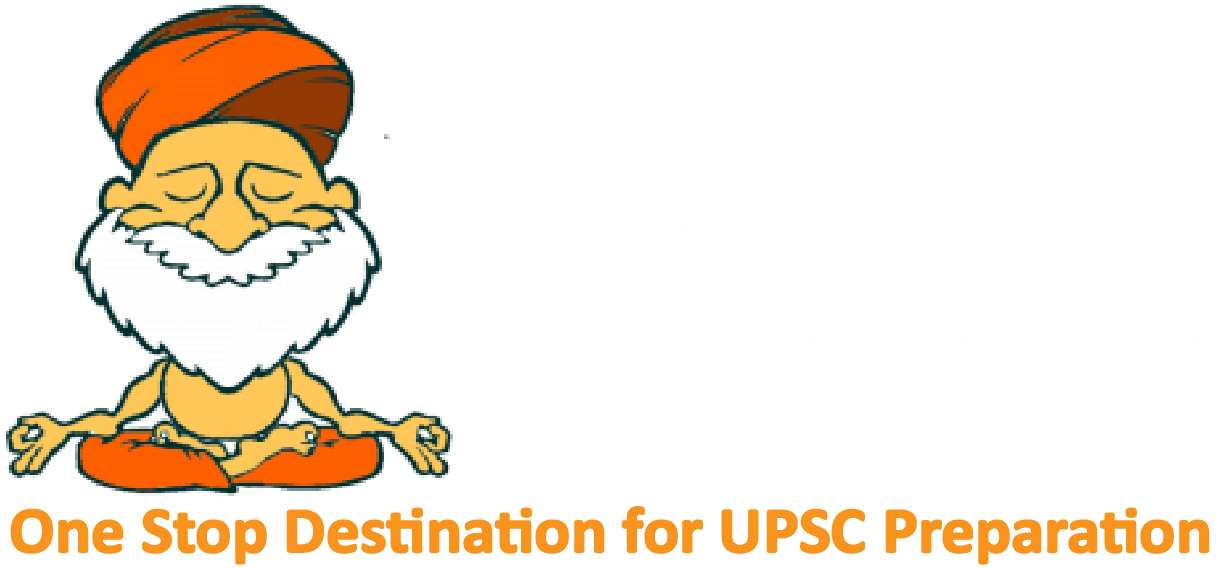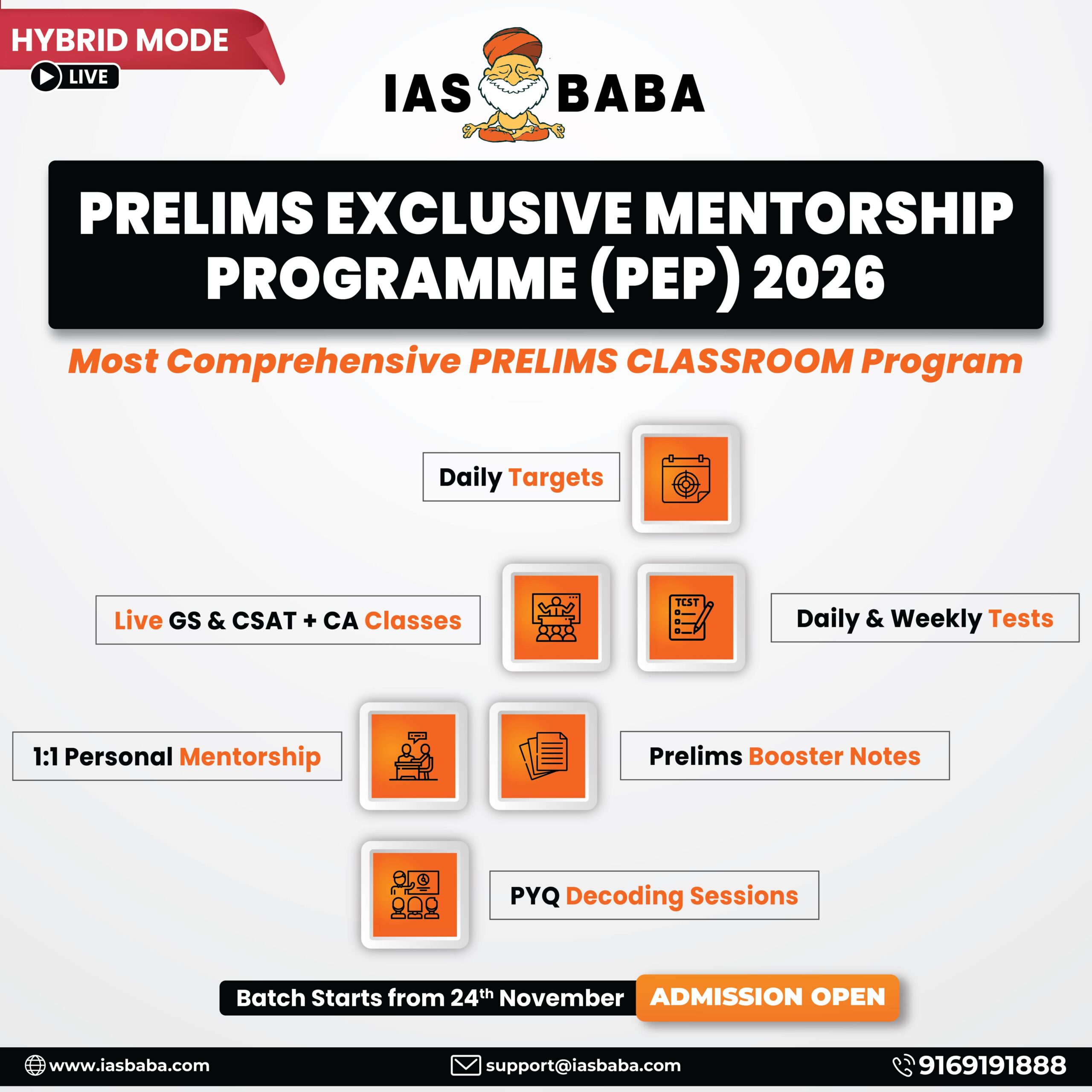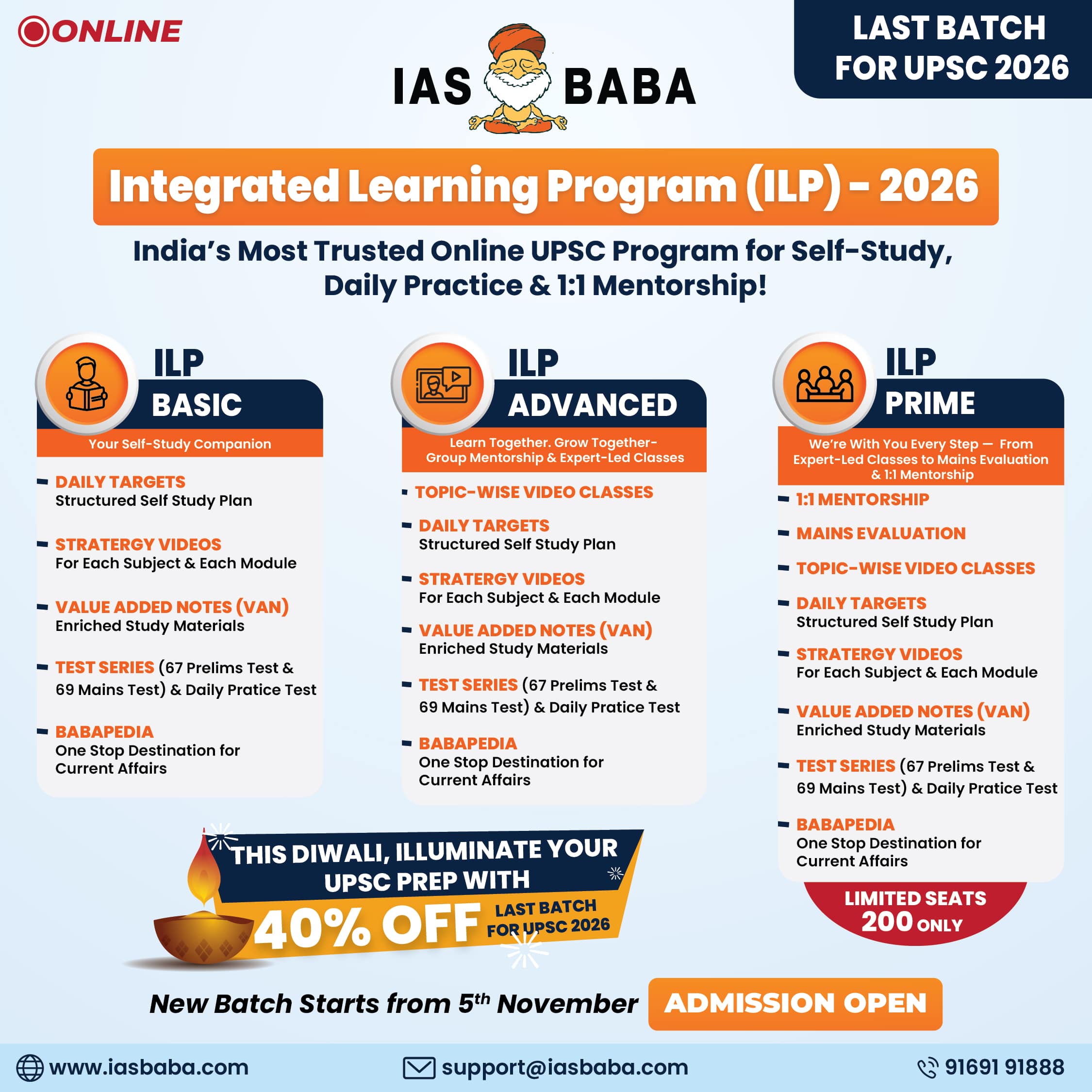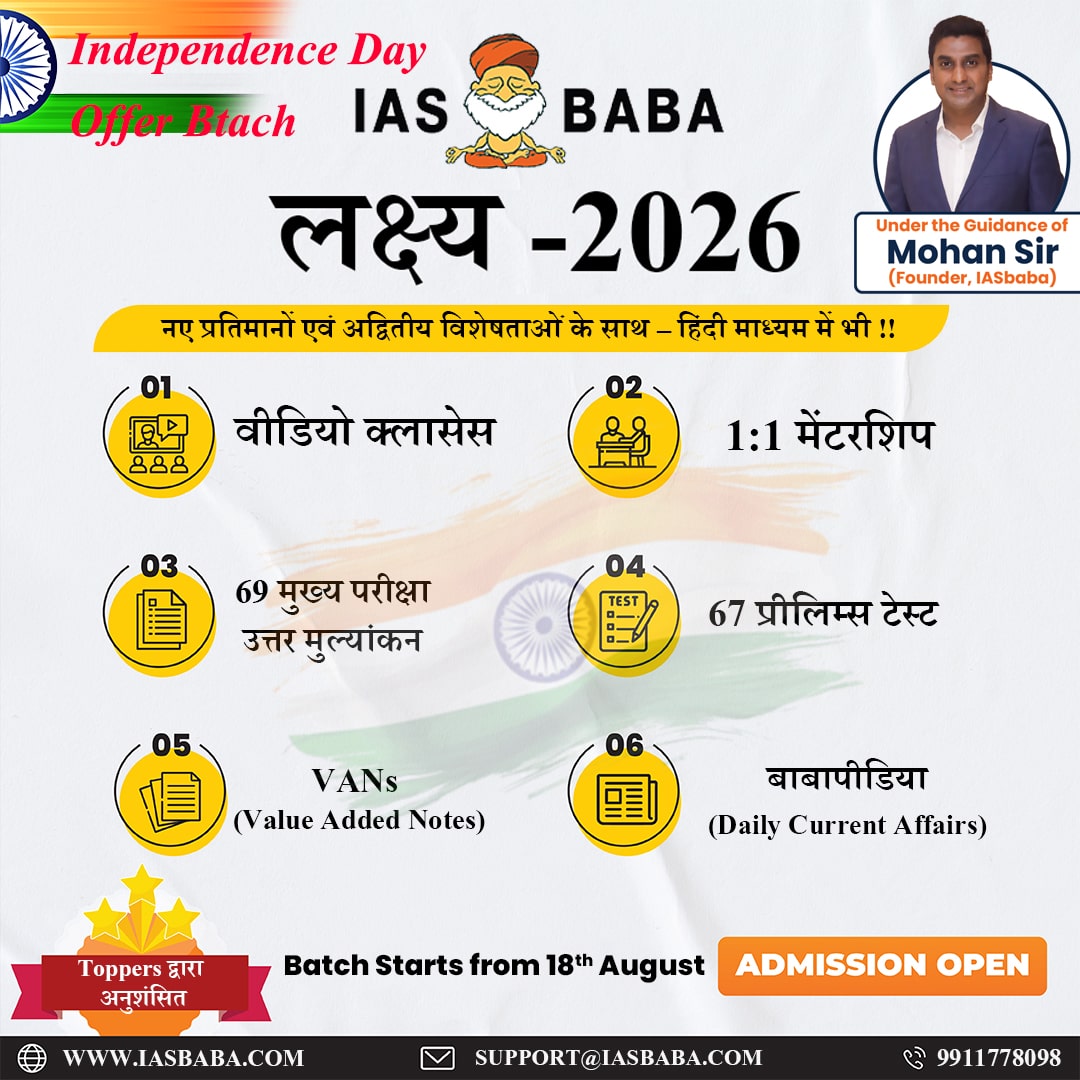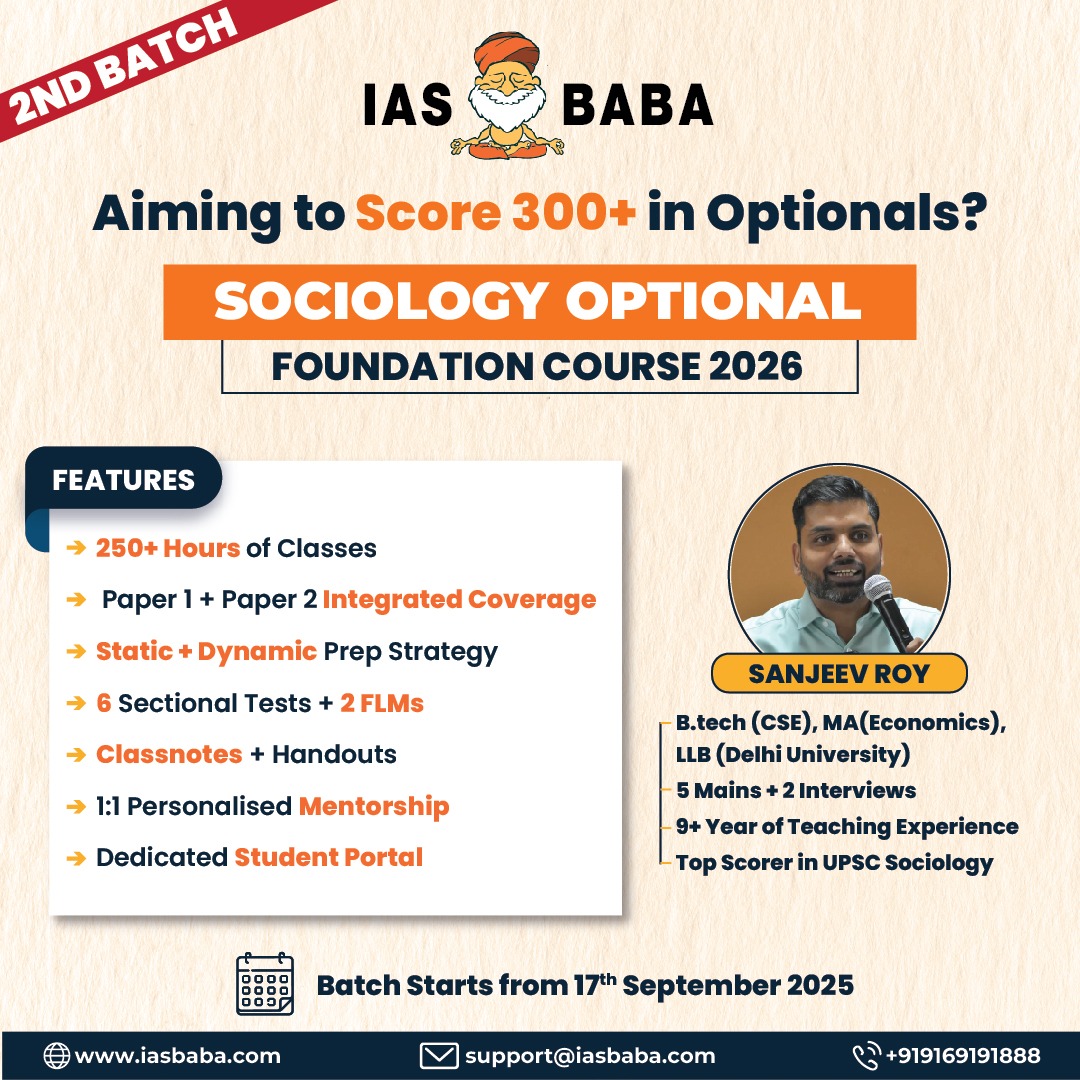IASbaba's Daily Current Affairs Analysis
Archives
(PRELIMS Focus)
Category: Polity and Governance.
Context:
- The Centre has argued in the Supreme Court that the ‘right to vote’ in an election is different from the ‘freedom of voting’, and while one is a mere statutory right, the second is a part of the fundamental right to freedom of speech and expression.

About Right to Vote:
- Significance: It is the cornerstone of our democracy, allowing citizens to have a say in who governs them and how they are governed. The ability to vote is not only a right, but a responsibility, as it ensures that the voices of all citizens are heard and that their interests are represented in the government.
- Protected by UDHR: The right to vote is not just a privilege, but a basic human right. It is protected by the Universal Declaration of Human Rights (1948) and the International Covenant on Civil and Political Rights (1966).
- Constitutional provision: The Constitution of India, under Article 326, guarantees universal adult franchise, stating that every citizen aged 18 or above is entitled to vote, provided they are not disqualified under law.
- Amendment: The 61st Constitutional Amendment Act, 1988, lowered the voting age of elections to the Lok Sabha and to the Legislative Assemblies of States from 21 years to 18 years (earlier it was 21 years).
- Legal provisions:
- Representation of the People Act, 1950 (RP Act, 1950): Section 16 disqualifies non-citizens from being enrolled in electoral rolls. Further, Section 19 requires voters to be ordinarily resident and aged 18 or more on the qualifying date.
- Representation of the People Act, 1951 (RP Act, 1951): Section 62 allows voting for all enrolled individuals unless disqualified by law or imprisoned.
- Important judgements by SC:
- N.P. Ponnuswami Case (1952): The Supreme Court held that the right to vote is purely statutory.
- PUCL Case (2003): Justice P.V. Reddy observed that even if not fundamental, the right to vote could be considered a constitutional right.
- Kuldip Nayar Case (2006): The Supreme Court reverted to viewing voting as a statutory right.
- Anoop Baranwal Case (2023): Majority opinion once again concluded that the right to vote is statutory.
Source:
Category: Geography
Context:
- Meghalaya’s Umngot river, famed for its picturesque crystal-clear water, is murky this year, triggering alarm in the state.
:
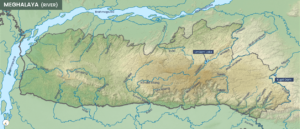
About Umngot River:
- Origin: It originates from the Eastern Shillong Peak, which is located 1,800 m above sea level. The river is in the village of Mawlynnong (“God’s Own Garden”) in Meghalaya, close to India’s border with Bangladesh, which is touted as Asia’s Cleanest Village.
- Uniqueness: Popularly known as Dawki river, the Umngot river is regarded as the cleanest river in India as well as Asia with its crystal-clear water. Its water is so clear that boats appear to be floating on air, with the riverbed visible even at depths of 15–20 feet.
- Natural divide: It acts as a natural divide between Jaintia and Khasi hills, before finally flowing into Bangladesh.
- Prominent tourist destinations: The river flows through the West Jaintia Hills district of Meghalaya and its pristine water in the winter makes locations along it such as Dawki and Shnongpdeng among the top tourist attractions in the state.
- Boat race: It is also known for the annual boat race in the month of March-April.
- Transportation: The suspension bridge over the Dawki River on NH-40 was constructed way back in 1932 and it is one of the busiest bilateral trade routes between India and Bangladesh.
Source:
- Category: Science and TechnologyContext:
- A Gulf Keralite’s impulsive decision to return home to treat a persistent fever turned out to be life-saving after he was diagnosed with scrub typhus. This has become the first documented case of scrub typhus contracted in the Gulf and diagnosed in India.
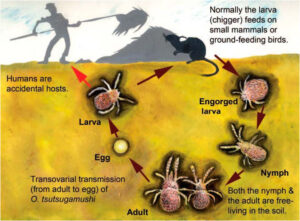
About Scrub Typhus Disease:
- Nomenclature: Typhus (or typhus fever) is the name used for several different types of bacterial infections spread by bug bites that cause similar symptoms, like high fever and rash.
- Causing agent: It is an infectious disease caused by bacteria called Orientia tsutsugamushi.
- Transmission: It is not directly communicable from person to person. Instead, it is a zoonotic disease that is transmitted to humans through the bite of infected chiggers (young mites).
- Reasons: Several factors, like vector abundance, climatic factors, exposures like farming and owning domestic animals, outdoor activities and sanitation, affect its prevalence. Also, this disease is more prevalent in cooler months.
- Symptoms: The symptoms typically include fever, headache, body ache, and sometimes a rash. In severe cases, the infection can lead to respiratory distress, brain and lung inflammation, kidney failure, and multi-organ failure, ultimately resulting in death.
- Vaccine: Presently, there is no vaccine available for this disease.
- Treatment: It is treated with doxycycline, which is most effective when administered early.
Source:
Category: Defence and Security
Context:
- The third vessel of the Survey Vessel Large (SVL) class, INS Ikshak, was commissioned into the Indian Navy at a ceremonial event held at Naval Base in Kochi.

About INS Ikshak:
- Nomenclature: The ship’s name, Ikshak, meaning “The Guide”, symbolises its purpose: to chart unexplored waters, ensure safe navigation for mariners.
- Construction: It is constructed by Garden Reach Shipbuilders & Engineers (GRSE) Ltd, Kolkata.
- Objective: It is the indigenously built Survey Vessels (Large) (SVL) which will study underwater hydrography.
- Indigenous: It boasts over 80% indigenous content.
- Structure: The Survey Vessel (Large) ships are 110 m long, 16 m wide with deep displacement of 3400 tons.
- Speed: The propulsion system of the ship consists of two Main Engines in twin shaft configuration and is designed with cruise speed of 14 knots and maximum speed of 18 knots.
- HADR capability: Beyond its primary role in hydrographic survey operations, Ikshak is also equipped with dual-role functionality, enabling it to operate as a Humanitarian Assistance and Disaster Relief (HADR) platform and a hospital ship during emergencies.
- Uniqueness: It is the first vessel in the SVL class to feature dedicated accommodation for women officers and sailors.
Source:
Category: Government Schemes
Context:
- One of the 8 startups supported under the National Quantum Mission (NQM) has successfully demonstrated India’s first extensive Quantum Key Distribution (QKD) network, spanning over 500 kilometers.
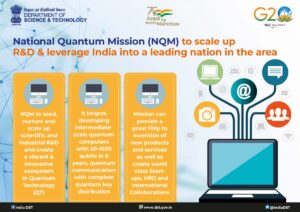
About National Quantum Mission (NQM):
- Implementation: It is implemented by the Department of Science & Technology (DST) under the Ministry of Science & Technology.
- Objective: The mission planned for 2023-2031 aims to seed, nurture, and scale up scientific and industrial R&D and create a vibrant & innovative ecosystem in Quantum Technology (QT).
- Significance: With the launch of this mission, India became the 7th country to have a dedicated quantum mission after the US, Austria, Finland, France, Canada and China.
- Focus on intermediate scale quantum computers: It targets developing intermediate scale quantum computers with 50-100 physical qubits in 5 years and 50-1000 physical qubits in 8 years.
- Development of magnetometers and superconductors: The mission will help develop magnetometers with high sensitivity for precision timing (atomic clocks), communications, and navigation. It will also support design and synthesis of quantum materials such as superconductors, novel semiconductor structures and topological materials for fabrication of quantum devices.
- Includes satellite communication: The mission will also help developing satellite based secure quantum communications between ground stations over a range of 2000 km within India and long-distance secure quantum communications with other countries.
- Thematic hubs: Under the scheme, four Thematic Hubs (T-Hubs) would be set up in top academic and National R&D institutes on the domains of Quantum Technology:
- Quantum computation
- Quantum communication
- Quantum Sensing & Metrology
- Quantum Materials & Devices
- Long-term impact: This will accelerate QT led economic growth and make India one of the leading nations in the development of Quantum Technologies & Applications (QTA) ranging from healthcare and diagnostics, defence, energy and data security. It will also work towards indigenously building quantum-based computers which are far more powerful and are able to solve the most complex problems in a highly secure manner.
Source:
(MAINS Focus)
(UPSC GS Paper II – Welfare Schemes for Vulnerable Sections, Governance, Social Justice and Poverty Alleviation)
Context (introduction)
As India faces widening inequality, technological disruption, and welfare inefficiencies, Universal Basic Income (UBI) has re-emerged as a pragmatic idea. By ensuring unconditional income security for all citizens, it promises to redefine the 21st-century welfare architecture around dignity and autonomy.
Main Arguments Presented
- Universality and Simplicity – UBI is anchored in citizenship rather than employment or proof of hardship, creating a rights-based, stigma-free model of welfare. It bypasses bureaucratic leakages and ensures a secure income floor for every individual.
- Economic and Moral Rationale – India’s top 1% owns 40% of national wealth (World Inequality Database, 2023). Despite 8.4% GDP growth (2023– 24), inequality and social stress persist. UBI addresses these distortions by directly empowering citizens and sustaining demand.
- Automation and Job Losses – With McKinsey estimating 800 million global job displacements by 2030, UBI can act as a safety buffer, allowing reskilling and labour market transitions in an automation-driven economy.
- Evidence from Pilots – SEWA’s Madhya Pradesh pilot (2011– 13) showed better nutrition, higher school attendance and earnings. Global trials (Finland, Kenya, Iran) reported improved well-being and mental health, debunking fears of reduced work incentive.
- Democratic and Philosophical Reorientation – UBI redefines the citizen-state relationship — replacing patronage-based populism with rights-based empowerment. It reduces political manipulation via freebies and allows voters to assess governments on governance quality, not subsidy promises.
Criticisms and Challenges
- Fiscal Feasibility – A minimal UBI of ₹7,620 per person annually (~5% of GDP) poses significant funding challenges. It would require rationalising subsidies, progressive taxation, or borrowing — each with trade-offs.
- Dilution of Targeting – Universality may benefit affluent groups, diluting redistributive focus unless carefully calibrated or phased.
- Technological and Administrative Gaps – Despite Aadhaar and DBT, digital exclusion persists in remote and tribal areas, risking exclusion from “universal” transfers.
- Complementarity Concerns – Replacing existing welfare schemes entirely could harm vulnerable populations dependent on PDS, MGNREGA, and social pensions. Integration, not substitution, is crucial initially.
- Inflation and Work Disincentive Fears – Though global evidence rejects major inflationary effects, fiscal mismanagement or poor supply-side responses could still risk price instability.
Reform Proposals and Policy Pathways
- Phased Implementation – Begin with vulnerable groups — women, elderly, disabled, and informal workers — allowing testing, feedback, and scaling.
- Funding Reforms – Rationalise subsidies (e.g., fertilizer, food, fuel), enhance wealth and inheritance taxes, and curb non-merit subsidies to create fiscal space.
- Technological Strengthening – Invest in last-mile banking access, digital literacy, and grievance redress to ensure true universality.
- Hybrid Welfare Model – Combine UBI with essential in-kind benefits like healthcare, food security, and education until universal public provisioning matures.
- Institutional Oversight – Establish an independent National Social Protection Authority for monitoring, fiscal sustainability, and periodic recalibration of benefit levels.
Conclusion
A Universal Basic Income, if designed with fiscal prudence and institutional strength, can recast India’s welfare state — from fragmented, paternalistic schemes to a rights-based, inclusive, and resilient social contract. As inequality widens and automation accelerates, the real question is not whether India can afford a UBI, but whether it can afford not to ensure economic dignity for all.
Mains Question:
- “Universal Basic Income can redefine India’s welfare state by embedding economic security. Critically examine the feasibility and implications of implementing a UBI in India. (250 words, 15 marks)
(UPSC GS Paper III – Conservation, Environmental Governance, Forest Laws and Policies)
Context (Introduction)
To ensure uniformity and proportionality in forest law enforcement, the Forest Advisory Committee (FAC) has recommended standardized penal measures, including uniform penal compensatory afforestation (CA) and penal net present value (NPV), for violations under the Van (Sanrakshan Evam Samvardhan) Adhiniyam, 1980.
Main Arguments and Developments
- Need for Uniform Penalties – The FAC observed that penalties for similar violations under the Act varied widely among states due to the absence of standard guidelines. This inconsistency prompted the proposal for a uniform penalty framework.
- Definition of Violation – Violations occur when forest land is diverted for non-forestry purposes (de-reservation, leasing, clear felling, etc.) without prior central approval as mandated by the 1980 Act.
- Penal Compensatory Afforestation (CA) – FAC recommended that penal CA should be levied over an equal extent of forest land involved in violations, in addition to regular compensatory afforestation. This ensures restoration proportional to ecological loss.
- Penal Net Present Value (NPV) – The penal NPV—quantifying the lost ecosystem services—is to be imposed up to five times the standard NPV for violations. The concept emerged from Supreme Court directives (August 2017) to strengthen deterrence and ecological accountability.
- Institutional Mechanism – The FAC advised state governments to send detailed violation reports to regional offices, identifying responsible officials and actions taken. A committee including ministry officers and FAC members submitted its recommendations in November 2024.
Criticisms and Challenges
- Implementation Gaps – Despite past guidelines, enforcement remains inconsistent across states due to lack of clear procedural frameworks and monitoring capacity.
- Overlap and Complexity – The coexistence of multiple penalty forms (CA, NPV, fines) risks duplication or ambiguity in determining proportional punishments.
- Administrative Burden on States –
Smaller forest departments face difficulty in preparing detailed compliance and violation reports as mandated. - Possibility of Discretionary Enforcement Without transparent reporting systems, discretionary application of penalties may continue, undermining fairness and deterrence.
- Delayed Legal Clarity – The rationalisation exercise has been pending since 2018, delaying uniform compliance despite statutory and judicial impetus.
Reform Measures and Recommendations
- Codified Penalty Framework – Finalise and notify uniform national guidelines integrating both penal CA and penal NPV to ensure consistency and equity.
- Transparency and Accountability – Mandate public disclosure of violation cases and penalties imposed through a centralised digital portal for monitoring.
- Capacity Building of State Forest Departments – Strengthen technical and legal capabilities to assess ecological losses and enforce compliance effectively.
- Integration with Compensatory Afforestation Fund (CAMPA) – Link penal collections with the Compensatory Afforestation Fund Management and Planning Authority for targeted ecosystem restoration.
- Periodic Review by FAC – Institutionalise annual audits of penal enforcement to ensure proportionality, prevent corruption, and update guidelines as per emerging needs.
Conclusion
The FAC’s move to standardise penalties under the Van Adhiniyam is a step toward rule-based, transparent, and ecologically just forest governance. A uniform penalty structure—integrating penal CA and penal NPV—can deter violations, enhance compliance, and reaffirm India’s commitment to forest conservation amidst expanding developmental pressures.
Mains Question:
- Discuss the measures taken by government to increase the forest over in the last two decades. How far have these efforts been successful ? (250 words, 15 marks )

